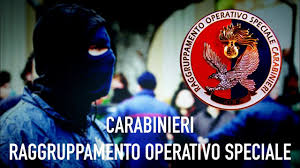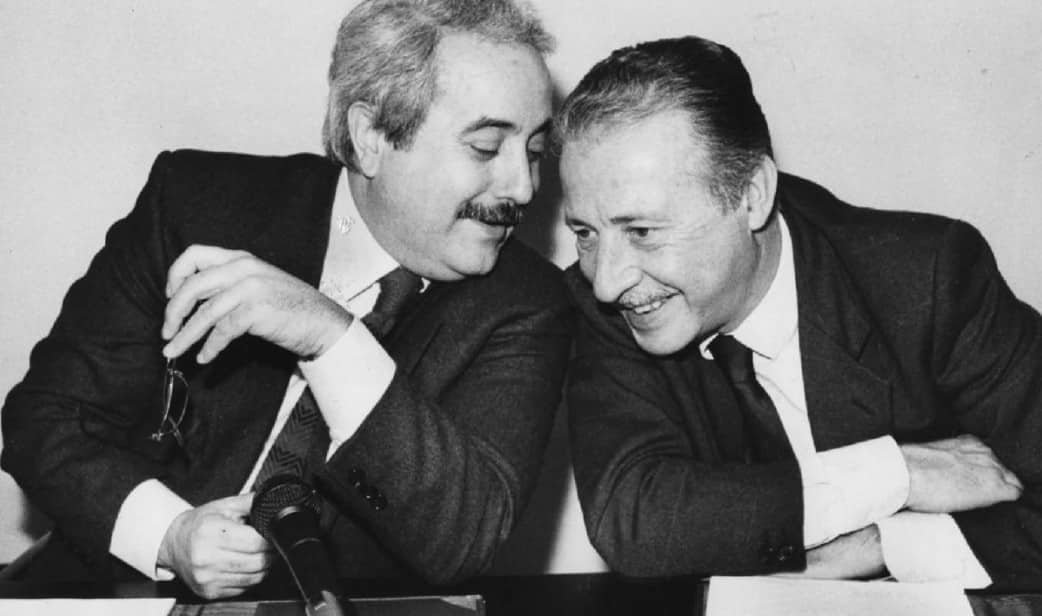
____ Fabio Giuseppe Carlo Carisio per VT Italia
«If we have to talk about disturbing aspects, there are several, certainly for the Borsellino massacre. My office, as national prosecutor, within the limits of its institutional tasks, did not stop trying to review as much as possible all the acquisitions, papers and assessments made not only for the Via D’Amelio massacre, but also for all the others, starting from the attack on the Addaura, to then continue with the various phases of the Lima murder, the Capaci massacre and that of via D’Amelio, to arrive in Florence, Rome, Milan and the – failed one – Olimpico “.
These quoted words were pronounced by the former National Antimafia Prosecutor, Pietro Grasso, before the Parliamentary Commission of Inquiry on the Mafia regarding the Great Crimes and the Mafia Massacres 1992-1993. The disruptive phrases and the disturbing questions that emerged from the hearing of 22 October 2012 in the 115th session of the bicameral body chaired by Giuseppe Pisanu, contained in an already public act of the Parliamentary Archive of the Italian Republic, are shockingly topical in light of the investigations and ongoing trials.
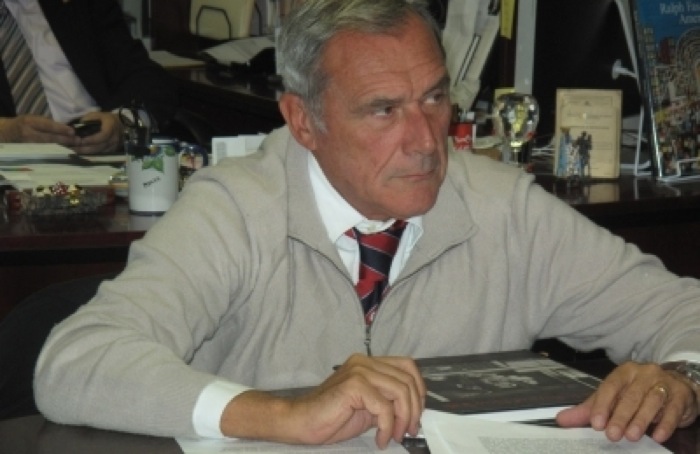
Grasso, who became President of the Senate with the Democratic Party in the previous legislature and now a senator elected in the Leu ranks, in his long conversation with parliamentarians highlighted on the one hand the limited powers of the National Anti-Mafia Prosecutor and on the other his “political” vision on the attacks carried out from Cosa Nostra as a «criminal services agency» on behalf of «hidden centers of power». These are 42 pages full of references, sometimes even very detailed, to extremist terrorists who are experts in explosives rather than to the Freemasons until the summons of the burning reports of the Dia and the Scos that with “the crystal ball” predicted “devastating criminal actions” pointing out however other investigative tracks that remained dead tracks …
Finally, there is the motive for the converging interests on the “criminal economy”: an alarm launched 7 years ago became a certainty in the latest semi-annual report 2018 of the DIA (Anti-Mafia Investigation Directorate) which highlights the by now established mafia infiltration in high finance and money laundering proceeds of offenses within clean activities in the tourism of hotels and restaurants.
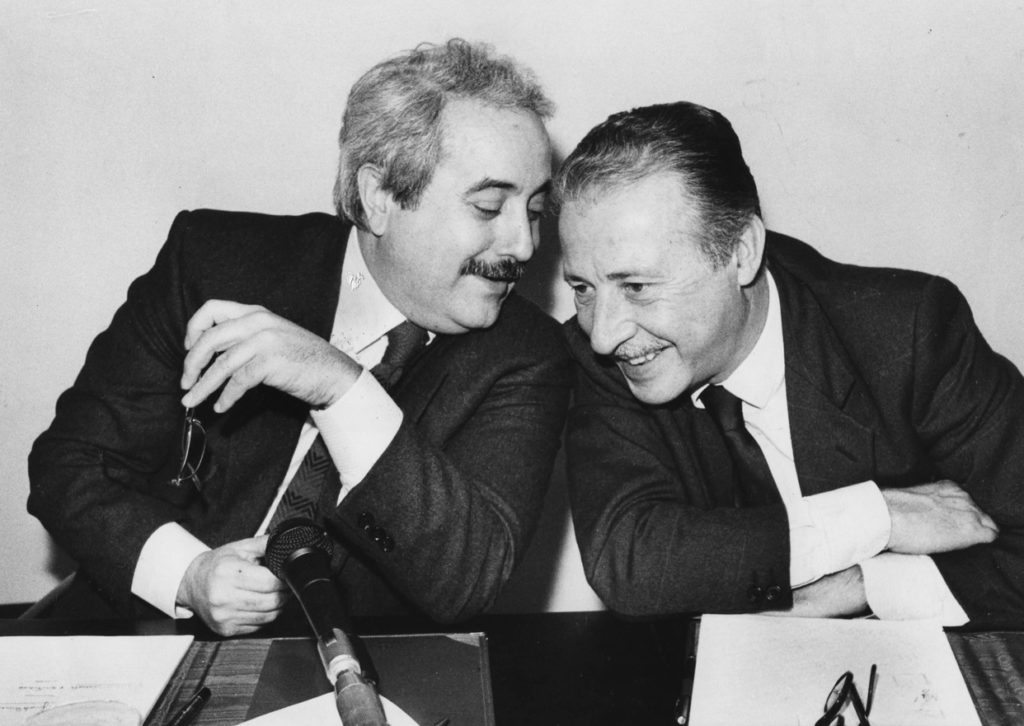
Only a few parts, just over an hour out of 5 of auditions, were classified because they were considered by the same magistrate Grasso to be involved in matters then under investigation. The crucial importance of that account of the then National Prosecutor derives above all from the circumstance that it is one of the very rare occasions in which the so-called Mafia State Negotiation was deepened in parallel with the investigations into the Via Capaci massacre, in which the magistrates Giovanni Falcone died and Francesca Morvillo, his wife, along with the men of the escort Vito Schifani, Rocco Dicillo and Antonio Montinaro, and on the massacre of Via d’Amelio, in which the judge Paolo Borsellino died with agents Agostino Catalano, Emanuela Loi, Vincenzo Li Muli, Walter Eddie Cosina and Claudio Traina.
THE MAFIA STATE TREATY AND THE HOT DOSSIER
But above all it was one of the few moments of analysis of the Sicilian judicial context in which the so-called Informative Charon developed, the investigation on the mafia-procurement plots started by the Carabinieri del Ros (Special Operational Grouping) under the coordination of Falcone, taken up by Borsellino to shed light on the fatal attack of his colleague friend, and quickly filed by the Palermo prosecutor, two days after the killing of the same Borsellino, so much so as to have recently been the object of recriminations by his daughter Fiammetta in an interview on RAI 1 In Grasso’s report the circle between the mafia, entrepreneurship, politics, Freemasonry, deep-state, secret services, closes like a prodigious ring destined sooner or later to give us the miracle of the much-desired truth.
Following that mafia-procurement investigation, the Palazzo dei Veleni turned into an urn of mysteries that bounce from one process to another 27 years later. There was the one before the Court of Appeal of Palermo (which will arrive in the Cassation) for which the authors of that dossier, the then general of Ros Antonio Subranni, Colonel Mario Mori (then brigadier general and director of Sisde), and captain Giuseppe De Donno for the alleged State-Mafia negotiation, from which, however, in 2015 he was acquitted, in an extracted proceeding, both their alleged “principal”, the former minister Calogero Mannino, that the former Interior Minister Nicola Mancino,
There is the debate before the Tribunal of Caltanisetta on the misdirection in the investigations on the massacre of via D’Amelio with three policemen investigated for aggravated slander. But there is also an echo of the criminal investigation of the Court of Caltanisetta that in 1999 ended with the acquittal of four magistrates for corruption for acts against the office and the most current one of the Messina Public Prosecutor who, instead, last month investigated two former magistrates of the Anti-Mafia Pool precisely for the misleading investigations into the death of Borsellino.
It is impossible to reconstruct in a single article 27 years of investigations, red herrings, disappearances of documents (such as the famous red diary of Borsellino), manipulations of repentant and partly still in progress processes. But it is also very dangerous because the online newspaper Il Dubbio, which dedicated a reconstruction in installments to the Informativa Caronte on procurement managed by the so-called Public Work Minister of Cosa Nostra, the arrested Antonio Sinio, who later became a collaborator of justice, was promptly sued …
Waiting to gather more detailed information (hoping to also receive contributions from official or anonymous sources), in this first report we therefore scrupulously abide by the words of the former National Anti-Mafia Prosecutor and those of the daughter of the murdered judge, a civil party in the Nissen trial on the misdirection. The latest statements by Fiammetta Borsellino rain like a hail in a clear sky against the political initiative branded 5 Star Movement de-declassification of the acts of the anti-mafia parliamentary commissions from 1962 to 2001: a strategy of transparency on very dated documents that will also be the subject of selection before of the reasoned publication in an ad hoc site of the Parliament.
THE MAFIA INVESTIGATION-PROCUREMENT ARCHIVED AFTER THE MURDER
“Today, indeed yesterday – says the magistrate’s daughter – many flaunt themselves for having declassified those acts. They, (Anti-Mafia Commission and Parliament ed), aim for anniversaries to show that they work. They, the CSM and the Anti-Mafia Commission, do so on 19 July on the anniversary of the death of my father and the men of his escort and have the flavor of media manipulation “. Words that are understandable given that his previous allegations against the CSM for the intention to close the disciplinary proceedings against the magistrates involved in misleading investigations into the massacre and its perplexities about the archiving of the mafia investigation – contracts had found an echo in the media but none side in political or parliamentary initiatives aimed at clarifying the work of togas.
The daily Il Dubbio took up the salient parts of the speech by Fiammetta Borsellino on Rai 1, hosted last February by Fabio Fazio at Che Tempo che Fa. The conductor asked her what her father was working on, what was so occult enough to kill him and implement a red herring. “To my father – replies Fiammetta – surely the themes of the contracts, of the economic potentates were at heart: yet the dossier on mafia and contracts was filed on July 20, a day after the massacre. There will certainly have been reasons, but I never knew them ». To be precise, the newspaper Il Dubbio reports that the investigation developed from the informative note “Caronte” of the Carabinieri del Ros was the object of a request for dismissal on July 13, endorsed by the chief prosecutor of Palermo and sent to the Tribunal Gip on 22,
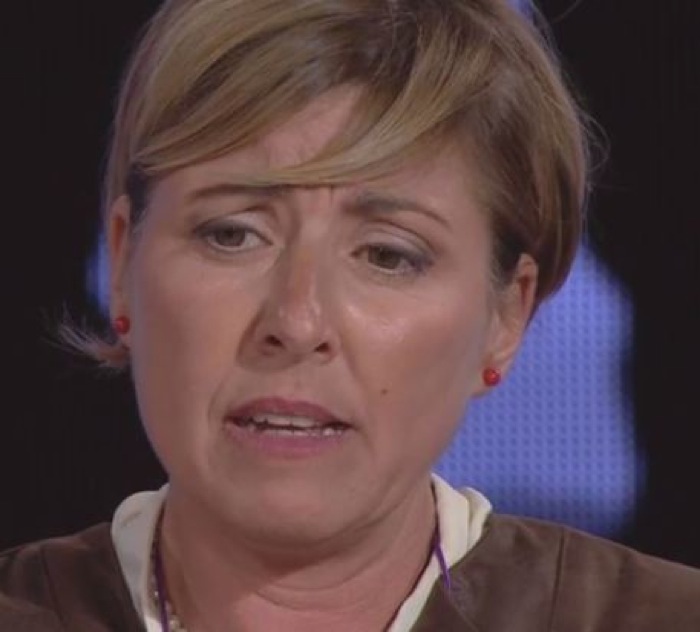
In the same broadcast the daughter of the murdered judge recalls the sore points of the misdirection: “There was a great deal of anomalies and omissions that characterized investigations and trials. The investigations were entrusted to Tinebra, belonging to the Freemasonry. And then the novice magistrates who found themselves managing complicated investigations so much that they declared that they had no competence in the area of organized crime in Palermo. The prosecutor of Caltanissetta – added Fiammetta – never heard a fundamental witness after the death of my father: the attorney Giammanco. He who kept in the drawer the information of the Ros announcing the arrival of TNT. Until Giammanco died a short time ago ».
Borsellino’s daughter refers to Pietro Giammanco, who died in December 2018, a former head of the Public Prosecutor’s Office of Palermo from 1990 to 1992, then resigned and moved to the Cassation Court a few months after the killing of Paolo Borsellino, when eight deputy prosecutors had launched an appeal threatening to resign from the prosecutor’s office if he did not leave. In his place, on 15 January 1993, Giancarlo Caselli arrived, who settled in the very day that Riina was captured thanks to the Ros led by General Mario Mori and the Crimor section of the famous Captain Ultimo, or the current lieutenant colonel of the Sergio De Caprio weapon.
DIFFERENT INQUIRIES ON MAFIA STATE NEGOTIATION
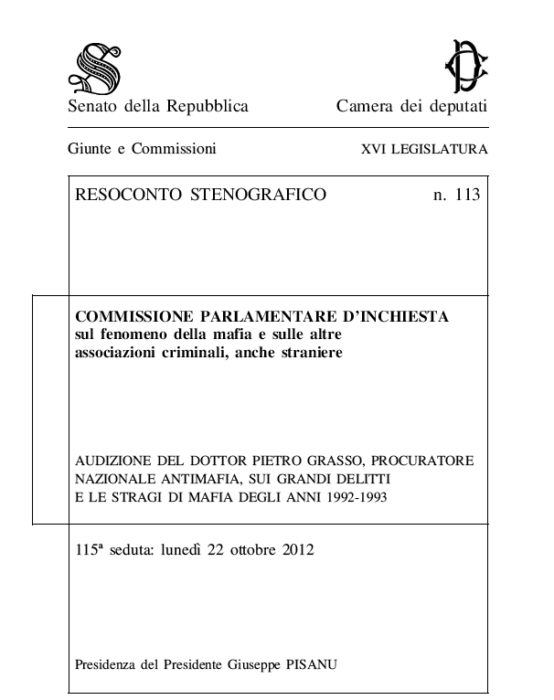
The national anti-Mafia prosecutor was instead invited in 2012 by the president of the parliamentary commission of inquiry into the 1992-1993 massacres to answer specific questions about the State-Mafia relations: was there negotiation? What did it consist of? When did it start? Who took part in it? How did it develop? How and why did it end? After having highlighted the limited investigative powers of the Anti-Mafia Prosecutor who can coordinate but not investigate, except in the extreme case of the invocation of the investigation for “the continuing and unjustified inertia of the investigation activity”, the then magistrate Grasso draws a picture general investigation. «Coordinating the DDAs of Florence, Palermo and Caltanissetta involves having a global picture of those that are, in fact, the investigative strands: certainly those of Caltanissetta are aimed at identifying those responsible for the 1992 Capaci and Via D’Amelio massacres; those in Florence were responsible for the massacres in Florence, Rome and Milan in 1993; finally, the investigative lines of the Antimafia District Directorate of Palermo tend to deepen the contacts and relations between representatives of Cosa Nostra and representatives of the institutions, falling within what is now commonly called negotiation ».
Leaving aside for the sake of synthesis the terrible massacre of Via di Georgofili on May 27, 1993 in which five civilians died including two girls, we focus on the analysis of the different outcomes of the Sicilian investigations traced by the then PN. «The position of Caltanissetta maintains that the negotiation has had an accelerating effect on the massacre of via D’Amelio and places it at the beginning of the first contact between the then captain De Donno and Massimo Ciancimino. This is therefore the beginning of the so-called negotiation: according to the assessments of the Nissena Anti-Mafia District Directorate, it began in early June 1992 and then continued with the various meetings between Captain De Donno and the then Colonel Mori with Vito Ciancimino. As part of investigative activities,
“As far as the position of the Palermo anti-mafia district director is concerned, there are small differences, which do not conflict with the assessments of the Caltanissetta DDA, but in a certain sense they are integrated. A first phase of the negotiation is anticipated at the time following the murder of MEP Lima. From this point of view, the idea of negotiation would have been anticipated, which would have been elaborated by subjects who … Perhaps it is better to secret this part »continues Grasso’s report that goes into analyzing the attacks on Palermo magistrates that begin with that of ‘Addaura, in the villa on the sea where the judge Giovanni Falcone met the Swiss colleagues for some connections in the respective investigations on recycling and drug trafficking,
POWERS ON THE RED THREAD BETWEEN LARGE CRIME AND STRAGES
«It is there that a different discourse begins, which always starts from the intuition of Falcone on the most refined minds. The point is not so much the most refined minds; Falcone completes the sentence speaking of centers of occult power that are by now connected with the mafia, which is something different – Grasso reveals to the Commission – It is not just a matter of particular minds; to speak of centers of occult power connected with the mafia means that there are converging interests, already from the attack on the Addaura, on the elimination of Falcone and of what Falcone represents. Falcone is not only the enemy number one of our thing, it is not only the one who managed to understand the secrets and the structure, who managed to get Buscetta to collaborate and then to do the maxi-trial. It’s not just that. That certainly is an important phase; but there is also a world that revolves around the criminal economy, of which Cosa Nostra is an integral part, but which is not composed only of Cosa Nostra. So, the fact that he could have hit, perhaps without knowing it, or touched the exposed nerves or the undiscovered interests (which he had approached) can certainly represent a hypothesis to continue to evaluate as a red thread that starts from the Addaura and continues later ».
It was investigating judge Rocco Chinnici, the first victim of an explosive attack in Palermo on July 29, 1983, to talk about the red thread that links great crimes and massacres of history as of the birth of the Mafia together with the political motions of Garibaldi-Mazzini-Masonic for the Unity of Italy.
THE INFORMATION PAPER OF THE CARABINIERI ROS
Grasso, on the other hand, reports to parliamentary commissioners “a combination of motives” urged by President Pisanu: “The question refers to the value you assign, in the general context, to the famous Carabinieri report on mafia and contracts”. That is the information Charon. “It is precisely this criminal system, made not only by the criminal cutthroat or the military mafia, which has repeatedly emerged from the investigations, is certainly the bearer of significant interests. I do not think that in the facts of the Mafia there is or we can identify a motive or a unique and specific causal. Often our thing has been used as an armed wing to defend these interests »replies the national prosecutor.

«What you can guess is that certainly economic-entrepreneurial interests, especially of high entrepreneurship, were threatened by an investigation that Falcone himself had started together with ROS. This investigation was initially not visible in a first phase. You will certainly have acquired the documents. I saw a very articulated report by the Public Prosecutor of Palermo on the successions of this mafia-procurement relationship – remarked Grasso – There was a very minimalist first report, which represented the phenomenon almost as if we wanted to see how the attorney’s office looked like and what he wanted to look into and move forward. There was then a second report, which intervenes at a later time, which will lead to the capture of Angelo Siino, the so-called minister of public works, which, however, is a kind of shield compared to much more interesting things that could have been discovered. When it is indicated, in an interception, “the one with the S”, it is believed to identify Siino, while then it will be discovered that it was the entrepreneur Salamone, who was the center of the whole of a small table of contracts with which the large contracts were divided Sicilian between the big companies and the mafia, with a 0.8 per cent for the cash of our thing held by Riina ».
“This certainly gives us a glimpse of big interests, as well as the interests that were managed by Lima (Salvatore, Sicilian parliamentary DC – ed) and by Ciancimino (Vito, entrepreneur and then mayor of Palermo – ed) in the division of the largest contracts in Palermo and in Sicily; the killing of Lima also means a way to completely change everything – the magistrate reported to the Commission – Lima had to be killed because he was a man of the losing faction of the Bontade-Inzerillo, he is not killed because he is a chicken with golden eggs that succeeds to get everyone to agree and manage this sector of public procurement. As long as it is useful, it is kept; when it is no longer useful and the Cosa Nostra political referent no longer produces anything, he changes. So the murder Lima, according to what Giovanni Falcone himself said, it is a watershed. Falcone said “now anything can happen” because a whole world collapsed “.
THE DOUBLE DOSSIER FOR THE DIFFERENT PROCURES
Senator Luigi Li Gotti, a member of the Commission, then introduced the question of the Carabinieri Ros report called Informative Charon “sent in reduced version to the prosecutor’s office of Palermo and in full version to that of Catania”, and of the conversation between Colonel Mori and Judge Borsellino on June 25, 1992. “Mori reported that the object of that confidential meeting, so as not to be seen in the prosecutor’s office, was precisely the impulse to investigate the mafia procurement relationship. But the Mafia procurement report that Borsellino knew was the incomplete one, where the names of the national politicians, the De Michelis interceptions, etc. were omitted ».
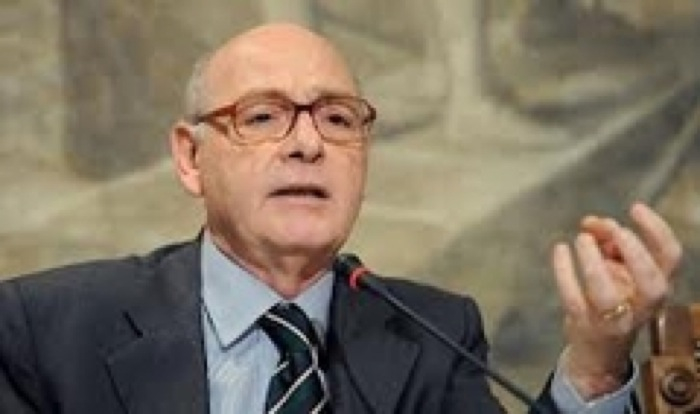
The same Li Gotti then mentions a very important act in this regard: “Subranni (commander of the Ros Carabinieri – ed) says he never had knowledge, but the prosecutor’s office in Palermo, when he makes inquiries on the mafia procurement report that sends to the CSM, on page 41, he affirms: “Who could have together the possibility and the authority to purge the information, expunging the sources of proof concerning the politicians De Michelis, Lima, Nicolosi, Mannino and Lombardo, before it was delivered, so purged, to the prosecutor of Palermo? Why has anyone decided to make these omissions? And, more particularly, the omissions made in the interest of Mannino and Nicolosi were then the result of preliminary agreements with the same Nicolosi and Mannino who had contacted the Carabinieri, saying they bet on Siino? “.
«It is not that the report is made and then it is purged. Since it was an investigation entirely based on interceptions, only those interceptions in which political figures were not involved were used for the report. Then the skimming takes place in the phase in which the judicial police must prepare the information by putting together the interceptions – explains the former PN Grasso with a personal reconstruction – The not particular predisposition of the Public Prosecutor of Palermo at the time was also known, given the its summit, to face this relationship between the mafia, entrepreneurship and politics in an absolutely detached and aggressive manner. I have always considered that the first report, done in that way, that is to say, artfully avoiding to insert some interceptions, especially those in which relations with politics came out,
THE MAFIA-APPROVAL RELATIONSHIP OF THE DETACHED ROS
But the former anti-mafia prosecutor points out a serious gap: “From what my news is, because I was not at the Palermo prosecutor’s office at the time, the report was divided, divided and entrusted by pieces to a dozen substitutes. In short, it was completely dismembered, which meant, even in the eyes of an inexperienced person, a way of not being able to see the whole: if the relationship is fragmented, I don’t know according to which criterion, whether territorial or otherwise, and is entrusted to many individual substitutes, the investigating body understands that there is not so much desire to go ahead and investigate, it launches on this aspect of the relationship between the mafia, business and politics. This is the theme. Among other things, the investigation had been going on for years and was propitiated and inspired by Giovanni Falcone.
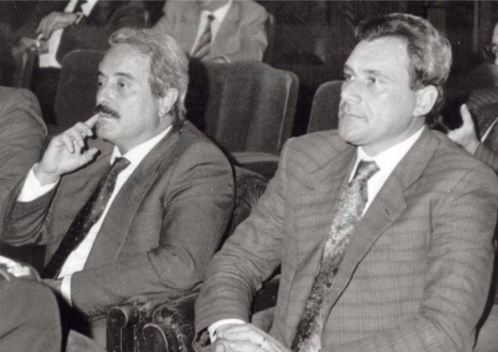
“The first report is from May 1991 and I think it has influenced the search for a bank of magistrates who could cultivate those things, including the deputy prosecutor Lima (Felice, proxy of Catania – ed). The report is brought – choosing it – to the substitute who guaranteed to be able to manage that thing. The operation then fails and the deputy Lima is forced to send it to those who are competent, because his superiors or his environment did not allow him to do what the Carabinieri wanted him to do. When the report arrives at the prosecutor’s office in Palermo, keep in mind the fact that he had been sent to the Minister of Justice, because it was not that he had arrived in Falcone: he was directed to the Ministry, then to the Minister of Justice, only that he arrived through the Penal Affairs ».
THE MINISTRY ALLOCATED ON THE SICILIAN TANGENTOPOLI
“I think that if a magistrate sends a report to a Ministry, it means he wants to make it known and put the Ministry on notice. If the news comes out, it’s not clear who sent it out; the motivations can be many, but certainly not among those that try to hoard that job to be able to exploit it to the maximum. I would keep a relationship like this like a treasure, indeed, magistrates, when they have something like that, don’t even want to show it to the one next door, “he stigmatizes Grasso.
«Meanwhile things mature and the awareness of this attempt to cover up comes out; let’s not forget all the poisons in Palermo, because that relationship was perhaps not well known in its entirety by some substitute, but certainly it was by Siino, who would then have been indicted (also because he himself declared that they brought him the report), so like some Carabinieri. There are stories behind that relationship. Even two magistrates in Caltanissetta had to defend themselves due to the leaks of information concerning that relationship – adds the then national prosecutor – In the end, when it was discovered what they wanted to cover, substantially emerged that Sicilian Tangentopoli that, if connected to the Milanese one, he would have really ruined so many entrepreneurs who were a flagship of the nation. Thus, the interests were considerable. The triad of the mafia-politics-imp rendency has always been going on and until it breaks in a decisive way, it will be difficult to get something useful out ».
THE LAST MEETING BETWEEN BORSELLINO AND MORI
The national prosecutor then dwells on the meeting between Mori and Borsellino on the mafia-procurement investigation, but even more on the scorching climate of Palermo. «The problem for the Carabinieri was the unreliability of the office that had to manage, direct the investigations and the investigations. In fact it had to happen in an absolutely secret way and in any case let’s not forget the difficulties encountered by Borsellino also in questioning Mutolo (regretting the mafia – ed): we know how long it took, given that before being able to question him we had to go with a another magistrate, because the prosecutor Giammanco had entrusted him with the area of Agrigento and Trapani, but not that of Palermo “.

“At Mutolo, who had begun to express his anxiety for collaboration some time ago, Falcone had said he had to talk only to Borsellino, precisely because he had to talk about delicate things and they trusted him. At first, in fact, there is even the prosecutor Vigna da Firenze who, however, when he understands that it is not a subject that he can deepen, decides to leave it to the prosecutor’s office in Palermo – Grasso recalls in audition – He calls Giammanco telling him that Mutolo wants to talk with Borsellino but, despite this, Borsellino cannot begin to quietly collect Mutolo’s statements alone. It is a fact. So there was this situation in which he had to move with a certain reserve, given also all the things that were coming out. It was a pathological moment of the whole situation “.
THE TRITOLO IN PALERMO FOR THE JUDGE TO KILL
“As far as the mood of Borsellino is concerned, I can have direct testimony, in the sense that I also met him in Rome around those days, on 10 or 11 July. He seemed really impressed to me, in the sense that he said to me: “What do you think, did the explosive come for me too? Friends, those who consider themselves as such, but are not, suggest me to leave Palermo and to abandon everything. But how can I abandon all these things? ”There was a veil of remarkable sadness; so I can only agree that this was the state of mind of Borsellino that I knew too “. The national prosecutor dwells on the psychological condition of the magistrate a few days before the attack: when he learned by chance of the TNT arrived in the island,
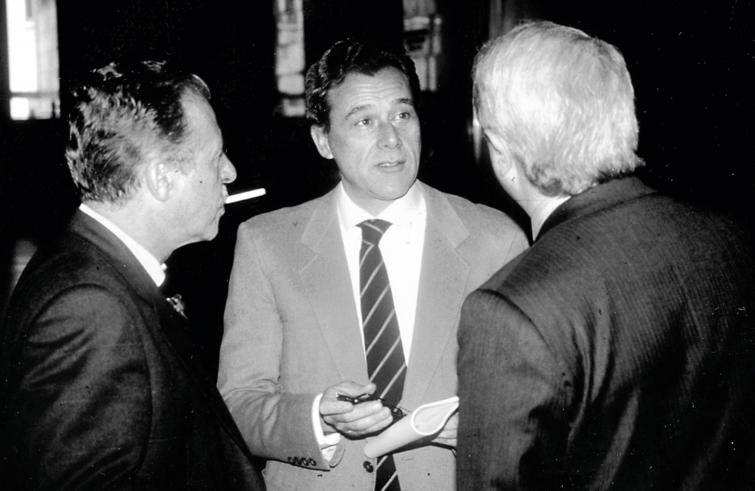
“Until the pentiti of the buildings are there, we can never have the complete truth. We have collaborators only on one side, the criminal part; but it is not that everything is known. There are parts that are reserved within the secret organizations, there is a compartmentalization, not everyone knows everything, “adds the former prosecutor answering questions from various parliamentarians and then focusing on those of the democrat Walter Veltroni on hidden power centers. and explosive attacks.
THE MAFIA ARMED ARM OF THE OCCUPIED POWERS
«I have said that the mafia has often acted as an armed force or agency, if you prefer. Indeed, I remember that Pippo Calò in Rome was so connected with the Magliana band that he was a criminal services agency. And – I repeat – he was in Rome. So I always had the speech of the armed wing and the agency. This gives the explanation on other causal reasons. Sometimes the reasons are convergent. Other times, instead, there are not exactly the causes of Cosa Nostra and this is the further characteristic, precisely in the cases you mentioned, Mr Veltroni, of the murders of the journalist Pecorelli and of the general Dalla Chiesa. It seems to me that all this can now be taken for granted ».
The former prosecutor then analyzes the “failed political turn” after Tangentopoli with the technical government (Giuliano Amato premier). «A misdirection is constructed because something else must be covered: this is the main hypothesis. Not only that, but when you check that the things you had to find in their place are not in their place and that certain lines of investigation have not been completely covered and deepened, there is some suspicion that there is a direction and a strategy that someone puts in act. In our country, in our history, there are many facts, the events that have been created, in which it can certainly be inferred that there is something non-transparent, that it is not absolutely visible and that it operates in secret. The definition “hidden centers of power” will be generic,

The description fits well with that concept of Deep State that goes beyond institutions and is able to correlate different criminal areas for their own purposes. Here therefore fade the hypothesis that the massacres of Capaci and Via d’Amelio, and the misdirections in the investigations on the latter, have taken place only for mafia vendettas on the maxi-trial or to obtain a revision of the hard prison of 41 Bis: it is mere contributing according to the PN. A central node in many of the 42 pages of audition remained in fact focused precisely on the so-called Informative Charon, deposited on 1 October 1991 after the first report of May by those same Carabinieri del Ros who then ended up under investigation for the Mafia State Negotiation in the acme of mistrust and clash of powers between the judiciary and the police.
THE NEGOTIATION THAT I DIDN’T EVEN ANY OTHER STRAGES
Grasso is drastic on the subject: “What is the ascertained fact? That there has been this activity. The stated purpose was: to end the massacres. Unfortunately, however, the massacres ended up in Sicily, but then continued on the continent. As for the role of General Mori, I continue to insist on a fact. General Mori can also be condemned. If you are convicted of an established fact or a series of clues, you have the opportunity to have an independent evaluation. However, whether or not it leads to responsibility for the fact, I say that the evaluation, from a political point of view, can be different. Therefore I continue to insist on the fact that we cannot attach ourselves or aggregate to the evaluations of others, of the magistracy in particular “.
Grasso also recalled that the 1993 attack in Florence on Via dei Gerogofili turned into a massacre only because of a change in the site of the car bomb caused by controls in the chosen place near the Uffizi, symbolic as that of the bombs at the church of San Giorgio of the Velabro in Rome, but also the difficulty of that of Capaci. “The remote-control operating mechanism that had to activate the explosive charge, in time with the machines going to 120 or 140 kilometers per hour, was not at all easy.”
FROM EXPERIENCED EXPLOSIVE TERRORISTS TO MASONRY
Was there anyone with convictions among the condemned? Churches Veltroni getting the punctual response of the former national prosecutor: “One who had to have these experiences and who is captured, according to the statements of Brusca, is a certain Rampulla di Mistretta, but the day of the massacre is not there. They will tell you that you only had to press the button on a remote control and that there was no Mafia expert. I say mafia, but Rampulla was of new Order, there he had made his militancy and – not to want to criminalize anyone – his explosive experience came from that attendance. In the massacres a certain Santo Mazzei from Catania is involved, which is what goes to put the bullet in the Boboli gardens in Florence, and must make the first claim for the Pianosa prison to begin to bring out the prison problem. He too has specific connotations of political precedents, which naturally make him fit into a certain entourage. The people of Catania did not want it in our own thing; it is Bagarella who manages to let him in and puts him under his protection: they tell us this. There is almost an infiltration and a construction that then becomes operational “.
But in addition to the correlations with the terrorist fields, the usual ingredients of an Italian spy-story obviously emerge: “Freemasonry, deviant services and great entrepreneurship: these are the categories, by now traditional, but from this then move on to say more … If we had of the elements towards an exponent of some of these categories, our judgment could already be more focused, “commented Grasso, immediately interrupted by President Pisanu’s assistant:” There are some lodges every now and then, such as those in the Trapani area “. “Exact. There is the loggia Scontrino and there are the loggias of the Trapani area ; but those are a reality »the then anti-mafia prosecutor immediately replies.
The second level of coverage is that concerning the areas of the police and the secret services that emerged in all their gravity in the “most serious misdirection of Italian judicial history” as the judges of the Assize Court of Caltanisetta of the Borsellino quater trial defined the investigation on via D’Amelio.
THE CLARIFY RELATIONSHIPS AND THE MISSING TRACKS
“There were then two Reports, one from the DIA (of September 1993) and the other from the SCO (the police anti-crime unit), which made precise references to the negotiation and the link between the Lima murder, the massacre of Capaci and all the various situations – added the national prosecutor – Sometimes I reread them and wonder if they had the crystal ball. Criminal actions of devastating scale are foreseen which will take place later. The SCO Report also talks about a bomb strategy launched in May 1992. How did they do it? Who drafted that report? How did he get this information? Certainly they are information of a confidential nature, which serves as a preventive measure, in order to be able to understand, at least, the things that happen and to prevent others from becoming more serious. But then, the tracks that emerged from these two reports have disappeared and have remained only our thing. This is the peculiarity: these tracks have been envisaged but, with the same speed, they have not been found in other surveys on these sectors “.
«In any case, it seems to me that on the relationship between mafia and contracts we have shown that one of the contributing factors could certainly be having touched such important and large interests. The criminal economy has become a part that hides in the legal economy polluting it, so now it is difficult to distinguish the two. Therefore, this may indeed be one of the triggering factors »is the bitter conclusion of the anti-mafia magistrate that fits perfectly with the analysis of the Dia Report to Parliament over the second half of 2018.

The synthesis is truly apocalyptic: two honest judges were killed with explosive attacks, the Carabinieri of the Mafia-Procurement report under investigation for a negotiation with Ciancimino that the officers of the Weapon have always claimed to be part of a normal investigation and management of a collaborator-informant to identify the other Cosa Nostra fugitives. That burning information on the connections between mobsters and entrepreneurs was closed. And the magistrates who investigated then and the others who later sidetracked had a career until retirement and subsequent death by seniority.
To this nauseating cake, talks and intertwining occult powers, which recalls the recent investigation into the Consip billionaire contracts by the Treasury and the intrigues for CSM appointments, all that is missing is a withered cherry that comes from history. The document of the first anti-mafia parliamentary commission that reveals the name of the politician who accredited the entrepreneur Vito Ciancimino making him make a career in railway procurement and smoothing out his future political career as Mayor of Palermo. It is not an act just declassified: it is a public correspondence since 1970 that however creates embarrassment in reading it and even more in quoting it or writing it. Because it evokes the name of the former Christian Democrat undersecretary Bernardo Mattarella, father of the current president of the Republic, as narrated byGospa News in the history of Sicilian untouchables …
Fabio Giuseppe Carlo Carisio
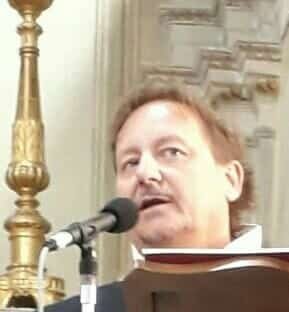
Fabio is Director and Editor of Gospa News; a Christian Information Journal.
Fabio Giuseppe Carlo Carisio, born on 24/2/1967 in Borgosesia, started working as a reporter when he was only 19 years old in the alpine area of Valsesia, Piedmont, his birth region in Italy. After studying literature and history at the Catholic University of the Sacred Heart in Milan, he became director of the local newspaper Notizia Oggi Vercelli and specialized in judicial reporting.
For about 15 years he is a correspondent from Northern Italy for the Italian newspapers Libero and Il Giornale, also writing important revelations on the Ustica massacre, a report on Freemasonry and organized crime.
With independent investigations, he collaborates with Carabinieri and Guardia di Finanza in important investigations that conclude with the arrest of Camorra entrepreneurs or corrupt politicians.
In July 2018 he found the counter-information web media Gospa News focused on geopolitics, terrorism, Middle East, and military intelligence.
His articles were published on many international media and website as SouthFront, Reseau International, Sputnik Italia, United Nation Association Westminster, Global Research, Kolozeg and more…
His investigations was quoted also by The Gateway Pundit, Tasnim and others
He worked for many years for the magazine Art & Wine as an art critic and curator.
ATTENTION READERS
We See The World From All Sides and Want YOU To Be Fully InformedIn fact, intentional disinformation is a disgraceful scourge in media today. So to assuage any possible errant incorrect information posted herein, we strongly encourage you to seek corroboration from other non-VT sources before forming an educated opinion.
About VT - Policies & Disclosures - Comment Policy

